Vietnam is a land rich in culture and history, and one of its most iconic symbols is the Ao dai Nhat Binh. This traditional Vietnamese attire has captivated hearts for generations with its elegance, grace, and timeless beauty. In this article, we'll delve into the intricate details of Ao dai Nhat Binh, exploring its historical roots, cultural significance, modern adaptations, and more. Join us on a journey to discover the charm and allure of this enchanting garment.
Ao dai Nhat Binh: A Captivating Masterpiece
Ao dai Nhat Binh is a traditional Vietnamese garment that originated from the "Đối khâm phi phong" style during the Ming Dynasty. It is a four-piece robe with a large rectangular collar that runs vertically from the neck to the chest. The collar is intricately embroidered, often featuring precious gems or gold buttons. Two decorative strips called "dải thùy lưu" hang down below the collar. In historical periods, specific accessories like the "Kim ước" were worn with the Áo Nhật Bình.
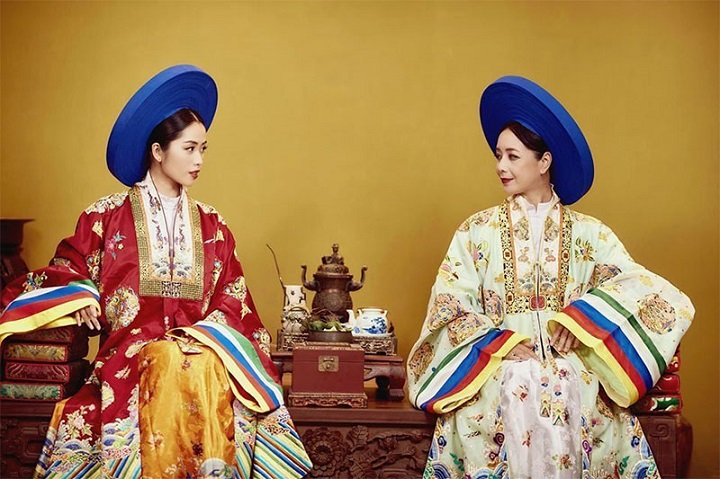
The name "Nhật Bình" comes from the rectangular decorative pattern on the chest of the robe. Circular motifs such as "phượng ổ" (phoenix nest) and "loan ổ" are commonly embroidered on the robe. Other auspicious motifs like characters for longevity and happiness, bát bửu, intertwined floral patterns, and pomegranates are sewn under the robe's hem, which often features wave-like patterns ("thủy ba").
In various historical periods, the robe's design and accessories were altered. During Emperor Gia Long's reign, there was a "Kim ước" attached. In Emperor Thiệu Trị's time, the "Kim ước" was replaced with "Kim phượng." The last significant change occurred during Nguyen Mạt's time, where Ao dai Nhat Binh was worn with the "khăn vành" - a common combination seen today.
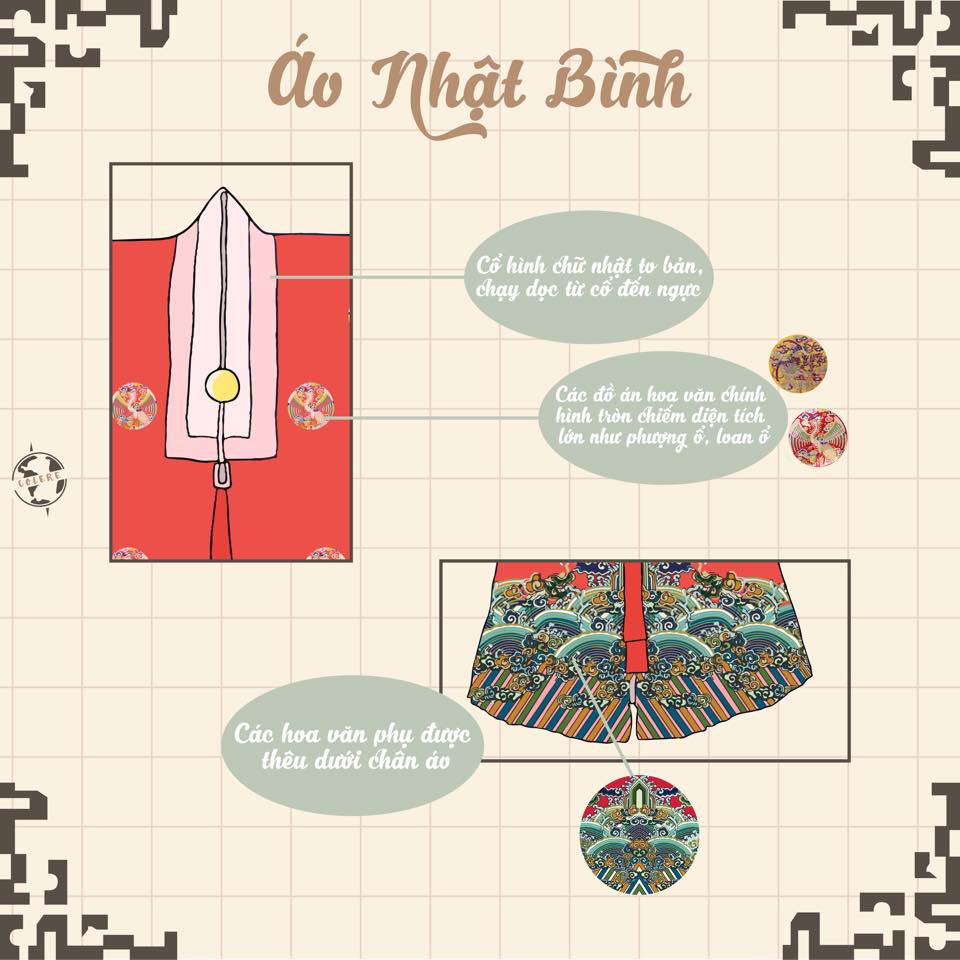
The Áo Nhật Bình is differentiated based on rank and status within the imperial court
-
Hoàng Hậu (Empress):
-
Accessories: 2 "Cửu long kim ước phát," 1 "cửu phượng kim ước phát," 8 gold "trâm phượng."
-
Attire: A robe made of yellow silk with embroidered dragon and phoenix motifs. A second robe made of white Bát ti silk with embroidered dragon and phoenix motifs. Accompanied by a hat and hairpins.
-
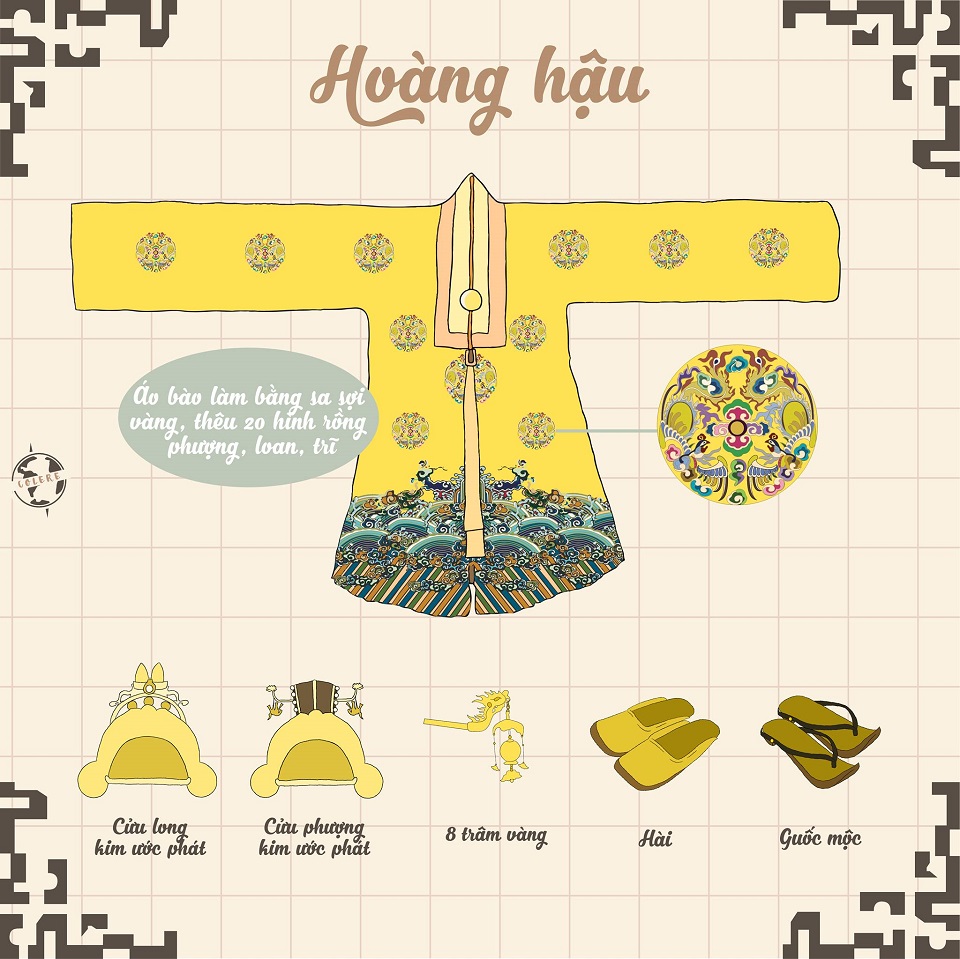
-
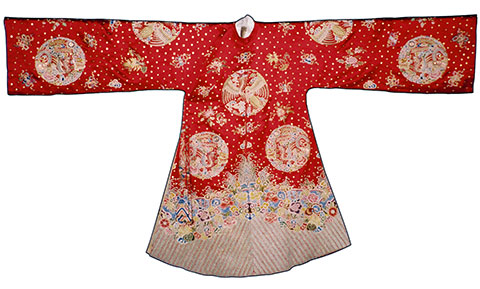
-
Ao Nhat Binh worn by the queen during formal court ceremonies
-
Công chúa (Princess):
-
Accessories: 1 "Thất phượng Kim ước phát," 12 "trâm hoa."
-
Attire: A red Áo Nhật Bình embroidered with "phượng ổ."
-
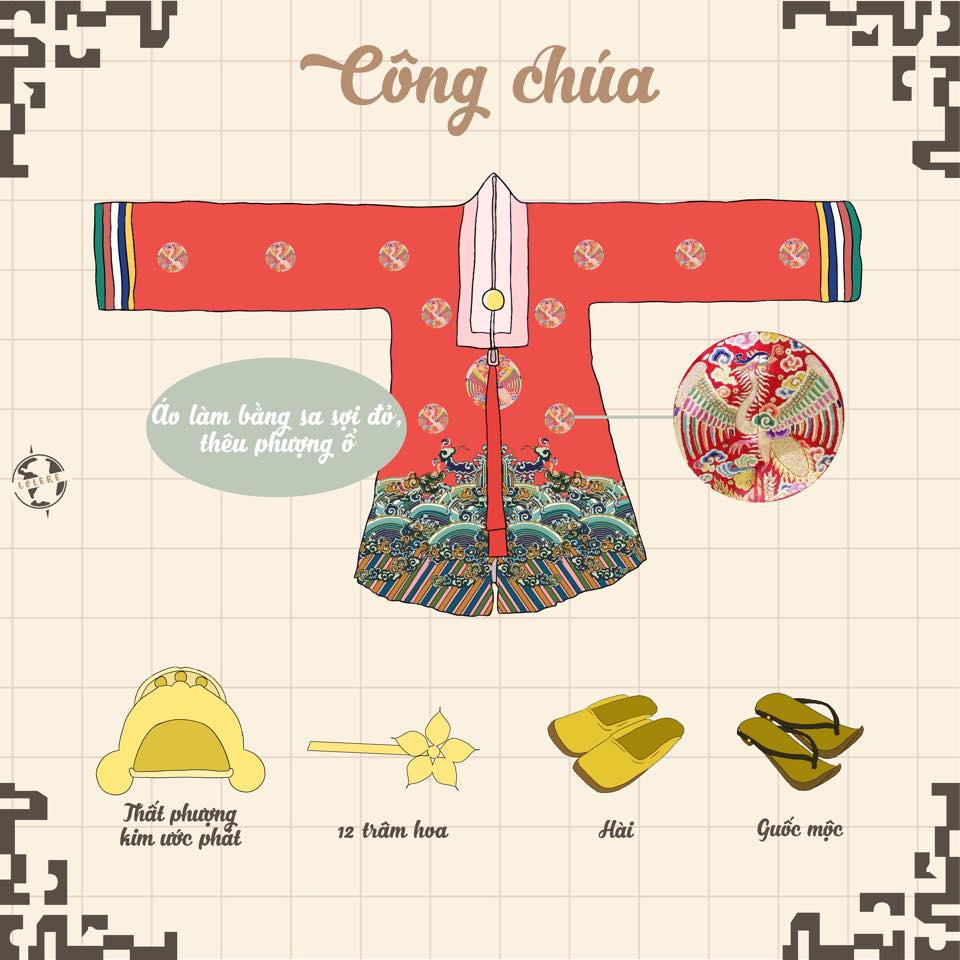
-
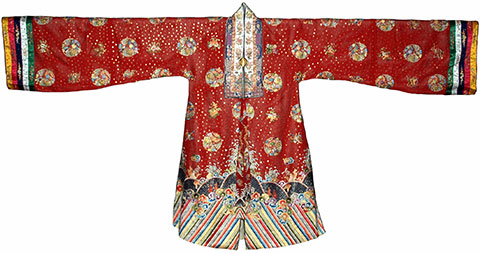
-
Ao Nhat Binh worn by the princess
-
Cung tần nhị giai (Concubine Second Rank):
-
Accessories: 1 "Ngũ phượng Kim ước phát," 10 "cây trâm hoa."
-
Attire: A pink Áo Nhật Bình with embroidered "loan ổ," accompanied by a Bát ti silk robe with embroidered "loan ổ."
-
Cung tần tam giai (Concubine Third Rank):
-
Cung tần tứ giai (Concubine Fourth Rank):
The differentiation in clothing and accessories was a part of the elaborate court hierarchy during the Nguyen Dynasty in Vietnam.
Evolution Through History
Ao dai Nhat Binh has evolved over time, adapting to changes in fashion and cultural norms. During the early Nguyen Dynasty, the Ao dai Nhat Binh adhered strictly to color and rank regulations. Under the reigns of Gia Long and Minh Mạng, the regulations were more elaborate, with the Ao dai Nhat Binh often paired with a white Xiêm y ensemble and a “Phượng” hat, varying according to rank. However, from the time of Emperor Đồng Khánh onwards, court regulations became simpler, and the attire was typically paired with white trousers and a larger "khăn vành."
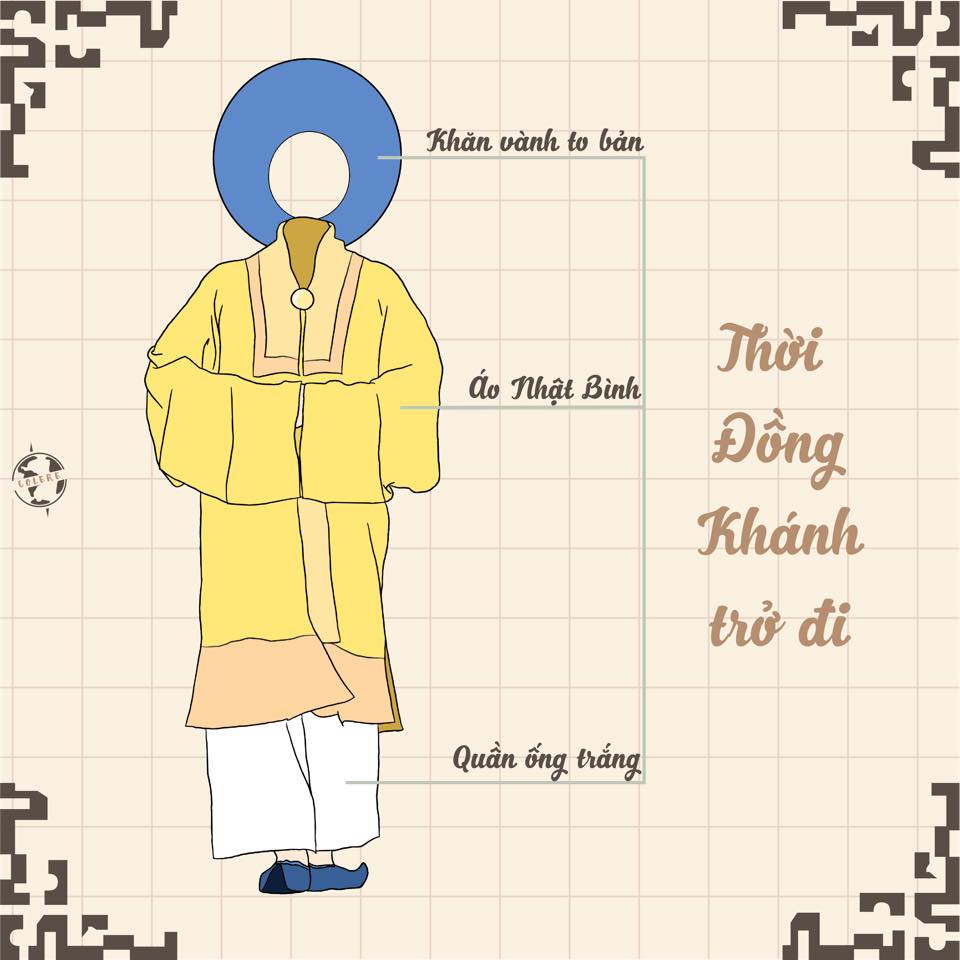
Ao Nhat Binh from the time of Emperor Đồng Khánh onward
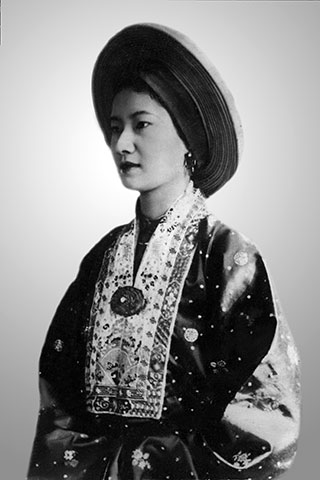
Queen Nam Phuong dressed in ceremonial Nhat Binh for the winter season
After 1945, Ao dai Nhat Binh became more popular among the general public, especially favored by women in Hue, who often chose it as their wedding attire. From being an attire exclusive to noblewomen in the royal court, Ao dai Nhat Binh transformed into a common outfit for everyone.
However, the traditional Ao dai Nhat Binh is still considered a high-end ceremonial dress, reserved for special and formal occasions. Traditional Ao dai Nhat Binh are always meticulously crafted, and embroidered with great intricacy. Most of the production process is done by skilled artisans or craftsmen using traditional manual techniques. This craftsmanship contributes to the high cost of these garments. During the Nguyen Dynasty, Ao dai Nhat Binh worn by queens, princesses, and consorts were meticulously crafted by court artisans over the course of many months. Their value was comparable to the grand ceremonial attire worn by princes, royal family members, and high-ranking officials.
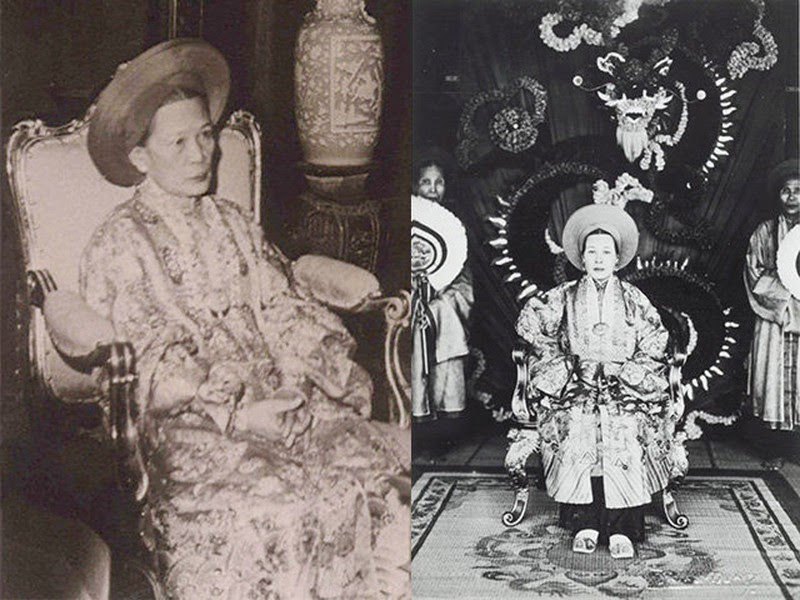
Queen Mother Từ Dũ in Nhat Binh
For more than 60 years, the Ao dai Nhat Binh seemed to fade into the past and appeared rarely on traditional festive occasions. Nevertheless, with the current trend of rediscovering traditional clothing, many young people now choose the Ao dai Nhat Binh for wedding photoshoots and special events. Set against the romantic backdrop and historical significance of Huế, photos taken in the Ao dai Nhat Binh highlight the elegance of Huế's imperial heritage more than ever before.
Modern Adaptations: Ao dai Nhat Binh in the Contemporary World
In Huế, most major wedding photography studios offer a blend of traditional and modern outfits to cater to the diverse preferences of couples. There are also shops for renting the Ao dai Nhat Binh in Huế;
This resurgence of interest in traditional clothing reflects a desire to connect with cultural heritage and preserve the rich history and aesthetics of Vietnam's past.
Not only in Vietnam but also on the global stage, Ao dai Nhat Binh has experienced a resurgence in popularity. Fashion designers have embraced this traditional attire, incorporating innovative fabrics, contemporary designs, and creative embellishments. As a result, Ao dai Nhat Binh has found its place in international runways, red carpet events, and cultural showcases.
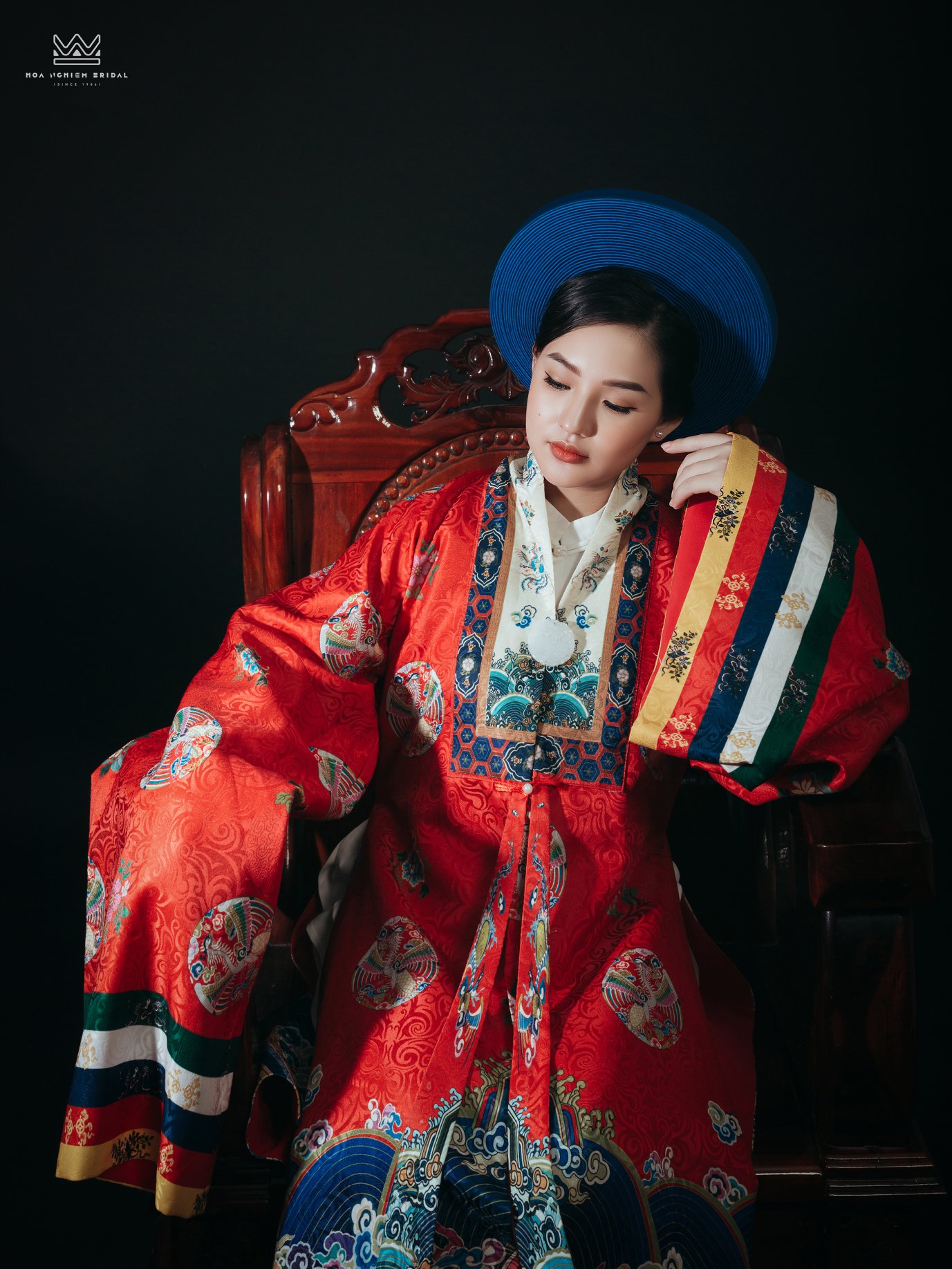
Modern brides choosing Nhat Binh Ao Dai for wedding photos
Preserving Elegance Through Generations
Ao dai Nhat Binh continues to enchant the world with its timeless elegance and cultural significance. This dress is not just an attire; it's a symbol of Vietnam's rich heritage, artistic craftsmanship, and enduring beauty. As it evolves with the times, Ao dai Nhat Binh remains a cherished emblem of grace and tradition, captivating hearts for generations to come.


Ao dai Nhat Binh taken by Photographer Đạt - Cổ phục Huế
FAQs About Ao dai Nhat Binh
1. What is the history of Ao dai Nhat Binh?
The history of Ao dai Nhat Binh dates back to the 18th century, during the Nguyen Lords' rule in southern Vietnam. It has since become an enduring symbol of Vietnamese culture and elegance.
2. How is Ao dai Nhat Binh different from other traditional dresses?
Ao dai Nhat Binh stands out for its form-fitting silhouette, high side slits, and paired trousers. Its intricate embroidery, vibrant colors, and graceful design distinguish it from other traditional dresses.
3. Can men wear Ao dai Nhat Binh?
While Ao dai Nhat Binh is traditionally worn by women, there are variations designed for men. These men's versions often feature simpler designs and straight-cut trousers.
4. What occasions are suitable for wearing Ao dai Nhat Binh?
Ao dai Nhat Binh is commonly worn during weddings, cultural events, formal ceremonies, and festive occasions. It holds deep cultural and symbolic significance in Vietnamese society.
5. How has Ao dai Nhat Binh evolved over time?
Throughout history, Ao dai Nhat Binh has undergone changes influenced by different eras and cultural influences. It has managed to adapt while retaining its elegance and traditional charm.
6. Can I find Ao dai Nhat Binh outside of Vietnam?
Yes, due to its popularity and global recognition, Ao dai Nhat Binh can be found in international fashion scenes, cultural exhibitions, and even among Vietnamese diaspora communities.